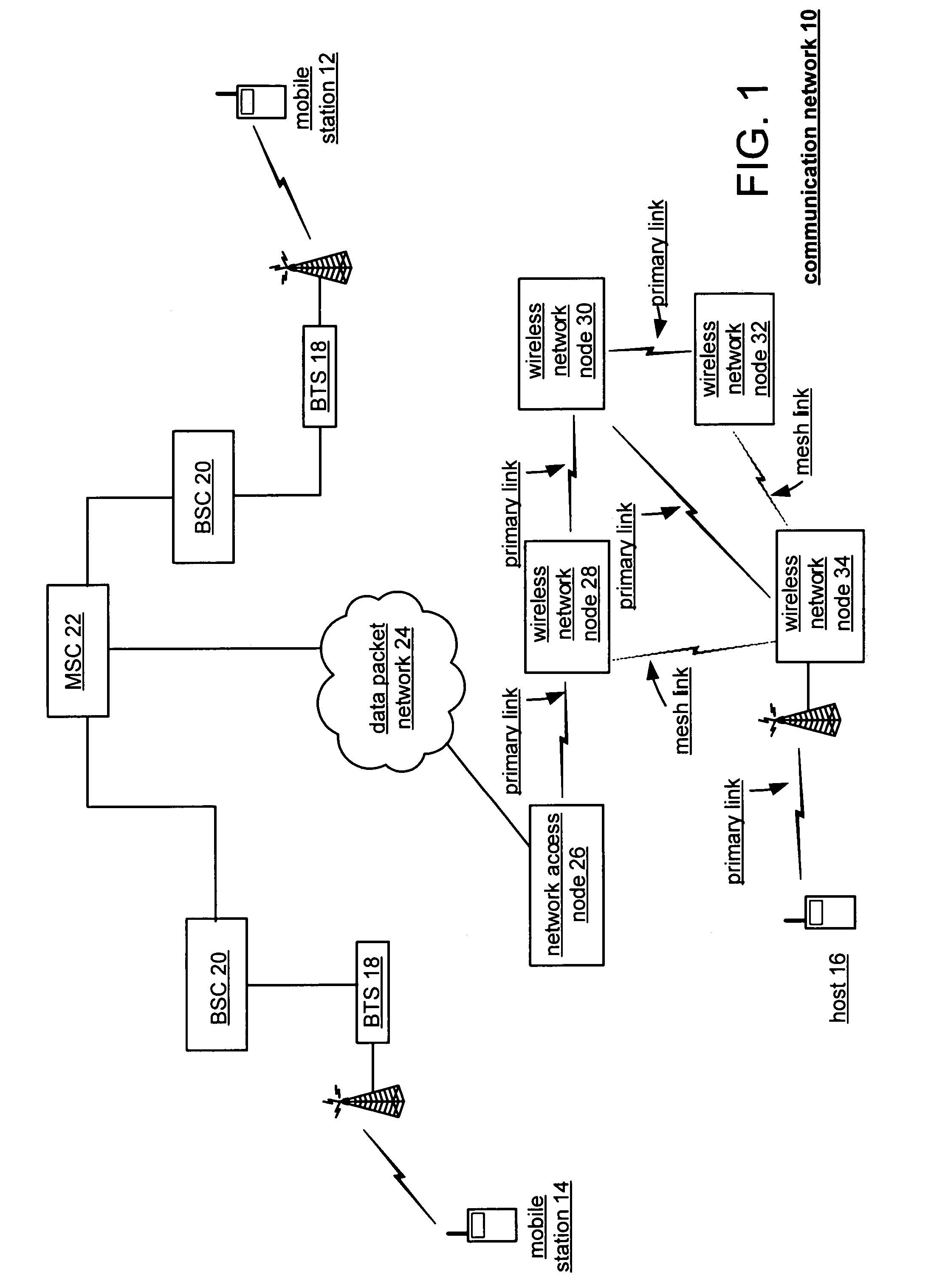Self-selection of radio frequency channels to reduce co-channel and adjacent channel interference in a wireless distributed network
a distributed network and radio frequency channel technology, applied in the field of wireless communication systems, can solve the problems of high labor intensity, large time and expense, and slow and laborious methods, and achieve the effect of saving time and cost of deployment and saving time and expens
- Summary
- Abstract
- Description
- Claims
- Application Information
AI Technical Summary
Benefits of technology
Problems solved by technology
Method used
Image
Examples
Embodiment Construction
[0047]FIG. 1 is a functional block diagram of a communication network formed according to one embodiment of the present invention. A communication network 10 is configured to allow a plurality of mobile stations, such as mobile stations 12 and 14 of a cellular network and a client 16 of a wireless local area network (WLAN), to communicate with each other regardless of geographic location as long as they are located in an area that is served by a service node (e.g., an wireless network node). As may be seen, each of the mobile stations 12 and 14 communicate by way of a base station transceiver system (BTS) 18, a base station controller (BSC) 20, and a mobile switching center (MSC) 22. As is known by one of average skill in the art, MSCs, such as MSC 22, provide network switching for cellular traffic according to a mobile station's location. More specifically, each MSC is coupled to at least one BSC, which, in turn, is coupled to at least one BTS. The operation of cellular networks as...
PUM
 Login to View More
Login to View More Abstract
Description
Claims
Application Information
 Login to View More
Login to View More - R&D
- Intellectual Property
- Life Sciences
- Materials
- Tech Scout
- Unparalleled Data Quality
- Higher Quality Content
- 60% Fewer Hallucinations
Browse by: Latest US Patents, China's latest patents, Technical Efficacy Thesaurus, Application Domain, Technology Topic, Popular Technical Reports.
© 2025 PatSnap. All rights reserved.Legal|Privacy policy|Modern Slavery Act Transparency Statement|Sitemap|About US| Contact US: help@patsnap.com



